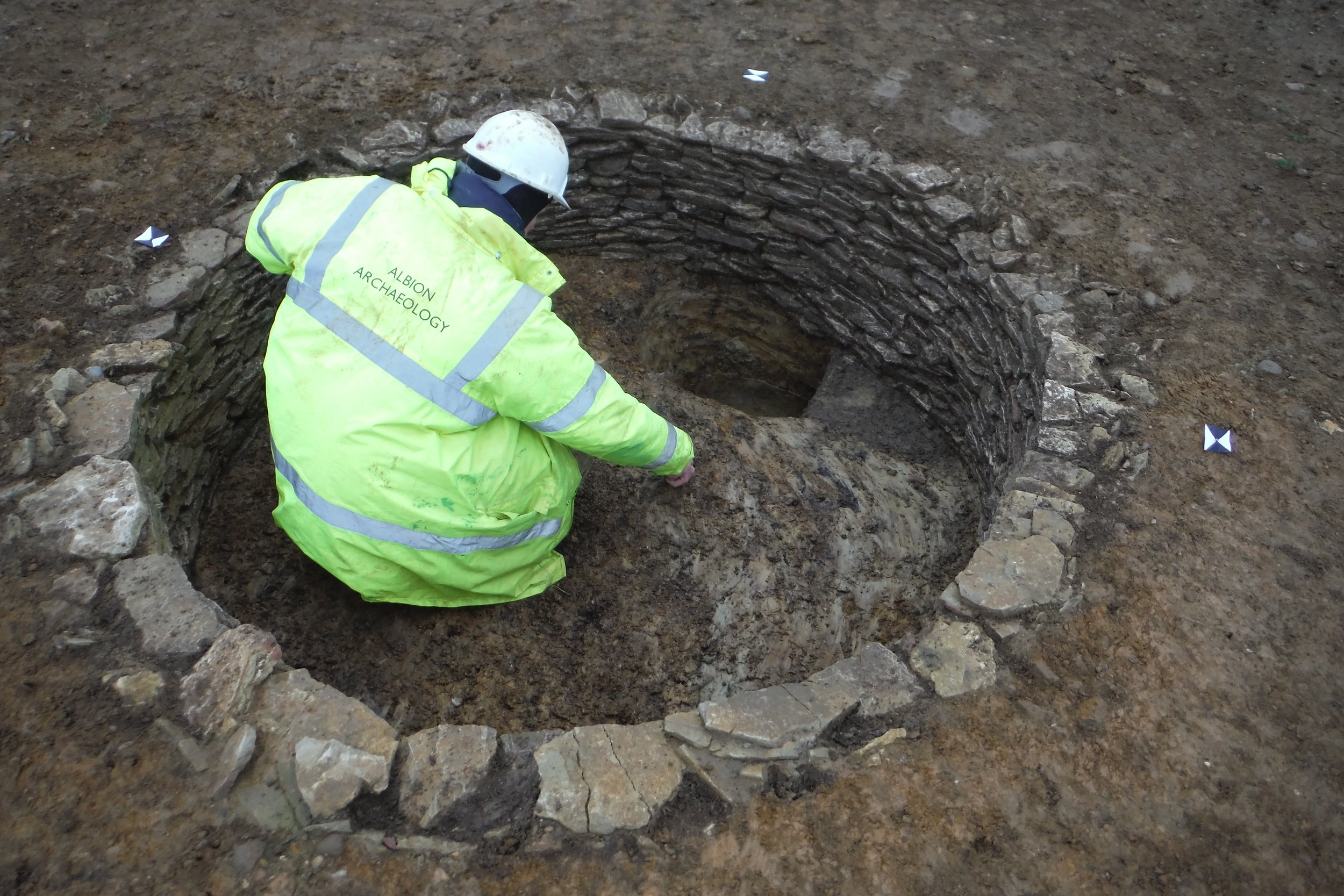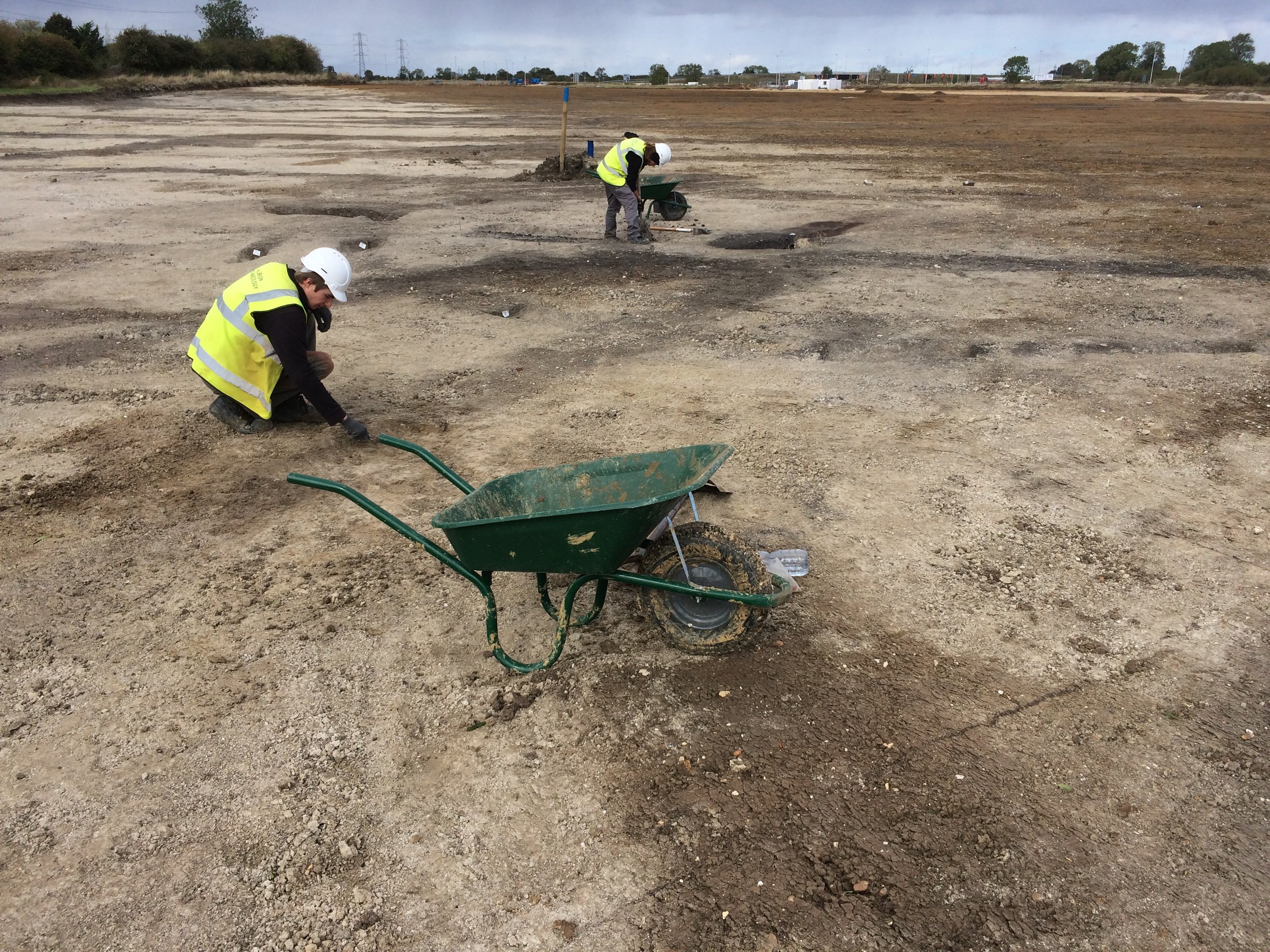Albion Archaeology Monographs 6 & 7 Now Available
We are pleased to announce the publication of the latest editions of the Albion Archaeology Monograph. Monograph 6: Radstone Fields and Northampton Road, Brackley, Northamptonshire and Monograph 7: A Roman Farmstead and other Late Neolithic to Post-medieval Land-use at Houghton Regis, Bedfordshire are now available.
Monograph 6: Radstone Fields and Northampton Road, Brackley, Northamptonshire: Two Iron Age Settlements at the Head of the River Great Ouse Catchment by Iain Leslie
Monograph 6 presents the results of investigations undertaken as a result of two housing developments in Brackley, Northamptonshire. The publication gives a comparative overview of the excavations, looking at the nature of two extensive middle Iron Age settlements and their inhabitants, and examining their place within the wider landscape of the region.
The settlements contained numerous roundhouses as well as a wealth of storage pits and post-built granaries. More enigmatic features included several stone-lined pits and a stone-lined ditch. The evidence tells the story of two relatively large, rural settlements that were geared towards arable production - part of a series of similar inter-related settlements along a tributary of the River Great Ouse.
Monograph 7: A Roman Farmstead and other Late Neolithic to Post-medieval Land-use at Houghton Regis, Bedfordshire by Mike Luke and Jo Barker
Monograph 7 covers Albion Archaeology’s 2018-19 excavation within the Houghton Regis North 1 development in Central Bedfordshire. It produced evidence for activity dating from the late Neolithic to the post-medieval period, but which relates in the most part to an extensively investigated Romano-British farmstead.
The earliest remains are late Neolithic or early Bronze Age in date, comprising a ring-ditch monument and a cremation burial. The former is of particular interest - a small ring-ditch was subsequently encircled by a larger one and buried under a mount. A later spread of post-built structures, pits, postholes and burials were associated with a middle-late Bronze Age field system, the site of which was subsequently occupied by a late Iron Age/early Roman farmstead.
The landscape changed abruptly in the second half of the 1st century AD, with the establishment of a new, differently aligned farmstead on previously unoccupied land to the south. Deliberate planning is clear in the farmstead’s original layout of a trackway and enclosures, though it was substantially modified three times, with pottery and coins suggesting that occupation continued into the late 4th and probably even the early 5th century. The farmstead included two roundhouses, up to thirteen rectangular buildings, fifteen water-pits and up to four different types of drying oven.
A few artefacts stand out from what one might expect to find on a rural farmstead in the region, e.g. those associated with the military, with literacy, and with religion, in particular a small stone sculpture. The latter is a rare and exceptional find, which originally may have stood against the wall of a shrine.
To order these, or any of the Albion Archaeology Monograph series, please complete an order form, to be returned to David Ingham (details on form). Albion Archaeology monographs are distributed by CBA South Midlands.










